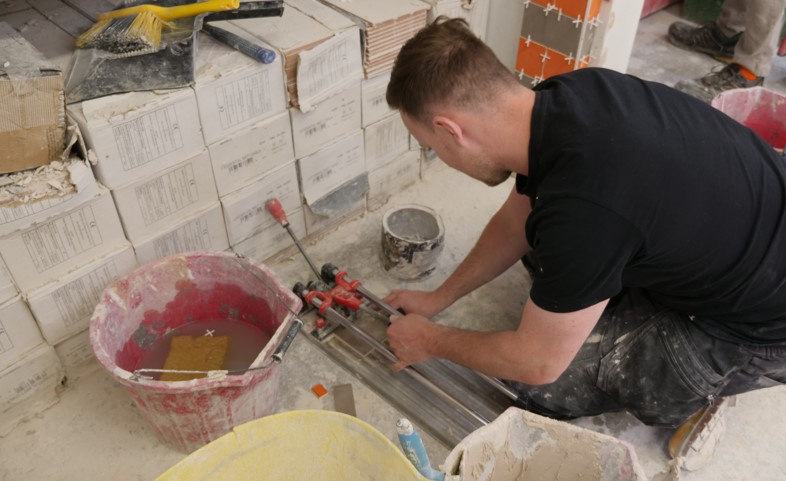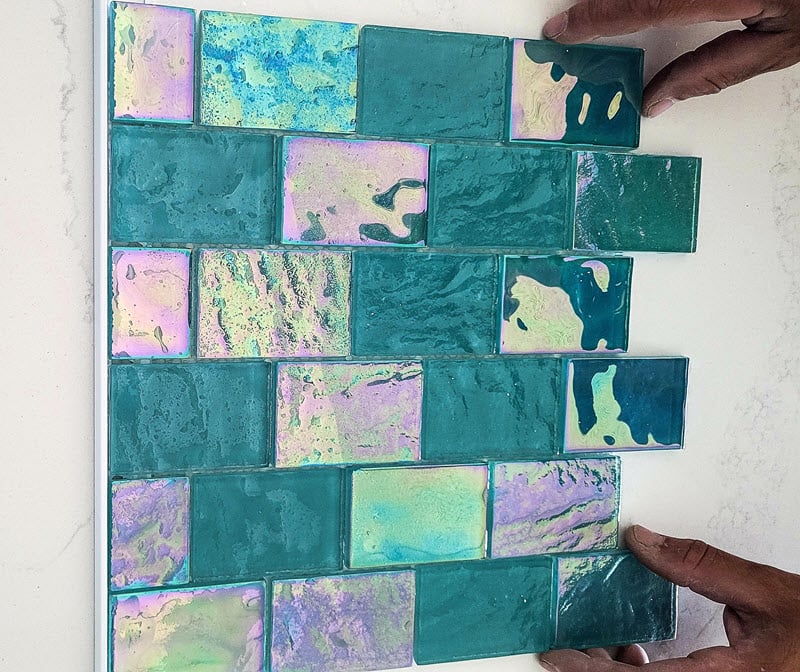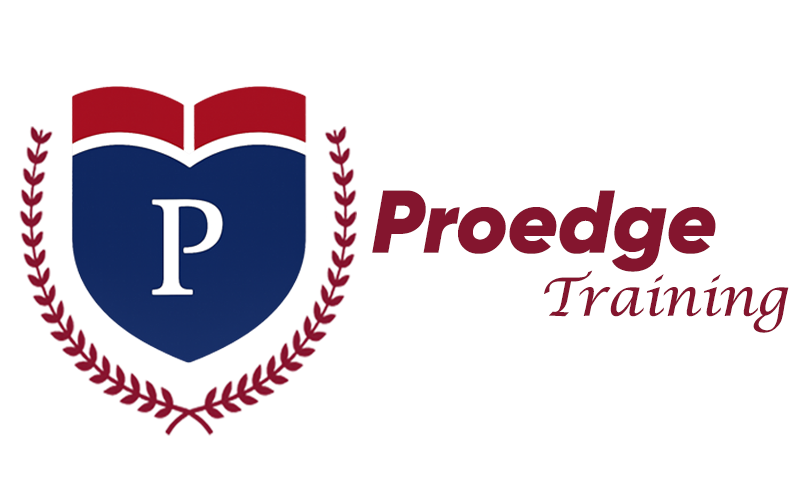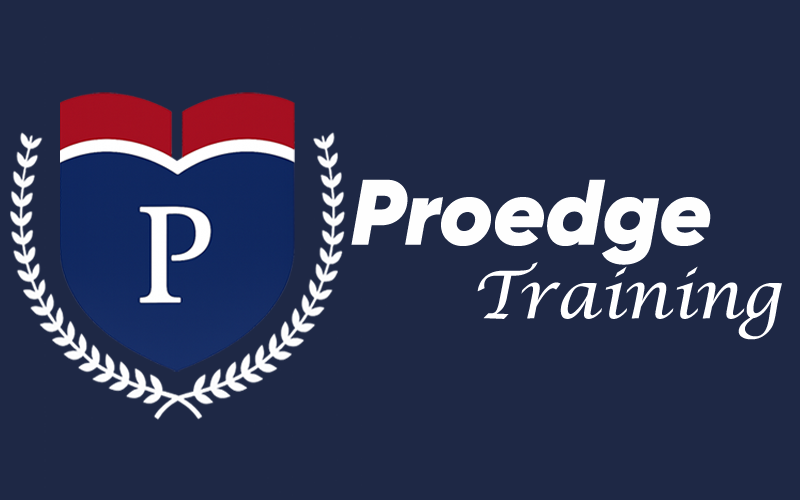
How to Become a Tiling Pro: Step-by-Step Guide
Becoming a tiler involves learning skills and gaining practical experience. You can start this journey by understanding the basics of tiling and exploring the tools needed.
Tiling is more than just placing tiles on a floor or wall. It requires precision, patience, and creativity. As a tiler, you transform spaces with your hands, turning plain surfaces into works of art. This craft involves cutting, measuring, and setting tiles with care.
Many people choose tiling as a career because it offers a blend of physical work and artistic expression. It also provides a stable income and flexible job opportunities. Whether you’re looking to renovate your own home or start a new profession, learning tiling can be a rewarding endeavor. Dive in and discover what it takes to excel in this skilled trade.
Introduction To Tiling
Thinking about a career in tiling? Tiling is a skilled trade that involves the art of laying tiles on floors and walls. Learning how to become a tiler can open doors to many opportunities in the construction and home improvement sectors. This guide will introduce you to the world of tiling, exploring what it is and why it matters. Whether you’re interested in floor tiling or wall tiling, understanding these basics is the first step toward a successful tiling career.
What Is Tiling?
Tiling is the process of covering surfaces with tiles. These tiles are usually made of ceramic, stone, glass, or other materials. Tiles add beauty and function to spaces like kitchens, bathrooms, and even outdoor areas. Tiling involves several steps and requires specific tiling skills. Here are some key components of tiling:
- Tiling Tools: Tools like trowels, tile cutters, and grout floaters are essential.
- Tiling Materials: Includes tiles, adhesive, and grout.
- Tiling Techniques: Techniques vary based on the type of tile and surface.
Working as a tiler involves understanding different materials and methods. A good tiler knows how to choose the right tools and materials for each job. Precision and attention to detail are crucial for a quality finish.
| Aspect | Description |
|---|---|
| Tiling Tools | Instruments used to cut, shape, and lay tiles. |
| Tiling Materials | Includes the tiles and substances like grout and adhesive. |
| Tiling Skills | Skills needed to properly lay tiles and finish surfaces. |
Importance Of Tiling
Tiling plays a critical role in both aesthetics and functionality. Well-laid tiles can transform a space, making it more attractive and easier to maintain. Here’s why tiling is important:
- Durability: Tiles are long-lasting and can withstand heavy use, making them ideal for floors and walls.
- Easy Maintenance: Once installed, tiles are easy to clean and maintain.
- Variety: A wide range of styles and colors is available, offering design flexibility.
In the tiling industry, staying updated with tiling industry trends is vital. This includes knowing the latest tiling techniques and materials. Certification can also boost your career, as many employers look for certified tilers. Tiling jobs are diverse, ranging from residential to commercial projects. With the right skills, tools, and materials, you can create stunning, functional spaces. Whether you’re tiling a small bathroom or a large commercial floor, the principles remain the same. Understanding the importance of tiling helps you appreciate its role in construction and design. A career in tiling is not just about laying tiles. It’s about creating spaces where people live and work comfortably.

Skills Needed
Becoming skilled in tile installation requires a blend of technical and soft skills. Whether you’re interested in floor tiling techniques or mosaic tiling, understanding the skills needed is crucial. Tiling is not just about laying ceramic tiles; it involves precision, creativity, and a knack for construction skills. Below, we explore the essential skills required to excel in a tiling career.
Technical Skills
Technical skills are the backbone of a successful tiling career. Mastering these skills ensures that your work is durable and aesthetically pleasing. Tiling Tools: Knowledge of tiling tools is essential. You’ll work with tile cutters, trowels, and spirit levels. Each tool has a specific function that aids in efficient tile installation.
- Tile Cutters: Used for precise cutting of ceramic tiles to fit specific spaces.
- Trowels: Essential for spreading adhesive evenly.
- Spirit Levels: Ensure tiles are laid flat and even.
Grout Application: This skill involves filling the gaps between tiles. Proper grout application enhances the strength and appearance of the tile surface. Floor Tiling Techniques and Wall Tiling: Understanding different techniques for floors and walls is vital. Each requires a unique approach for stability and style. A tiling certification can validate your technical skills. It provides formal recognition and may open more opportunities in your tiling career.
Soft Skills
Soft skills complement technical abilities in tiling. They enhance interactions and make you more adaptable to project demands. Attention to Detail: A keen eye ensures tiles are aligned perfectly. Small mistakes can lead to bigger issues in the final appearance. Communication: Effective communication with clients and team members is key. It helps in understanding project requirements and delivering satisfactory results. Problem-Solving: Challenges arise during tile installation. Quick thinking and creative solutions ensure the project stays on track.
- Adaptability: Projects can change. Being flexible with design or material shifts is important.
- Time Management: Efficiently managing time ensures projects are completed within deadlines.
These soft skills, combined with technical expertise, create a well-rounded professional. They help in building a strong reputation in the tiling industry.
Training And Education
Embarking on a journey to become a professional in tiling requires dedication and the right education. Training and education form the backbone of any skilled tiler. Whether through formal education or hands-on apprenticeship, mastering the art of tiling opens doors to numerous career opportunities. Let’s explore the educational pathways available for aspiring tilers.
Formal Education Options
Pursuing formal education can significantly enhance your tiling skills. Many opt for Construction Trade Schools that offer specialized programs in tiling. These schools provide comprehensive courses, covering everything from basic techniques to advanced tile installation. Key components of formal education include:
- Tile Installation Courses – Learn the intricacies of laying tiles with precision.
- Tile Design And Layout – Understand how to create aesthetically pleasing and functional designs.
- Flooring Technician Training – Gain insights into different flooring materials and techniques.
Many programs culminate in a Tiling Certification, showcasing your skills and knowledge. This certification can be a stepping stone to more advanced opportunities. Below is a table summarizing some common courses offered:
| Course | Description |
|---|---|
| Tile Installation Basics | Fundamentals of installing different types of tiles. |
| Advanced Tiling Techniques | In-depth study of complex tiling methods. |
| Design and Layout | Focus on creating unique tile patterns and designs. |
Formal education builds a solid foundation in Building And Construction Skills, essential for any aspiring tiler.
Apprenticeship Programs
For those who prefer a hands-on approach, Apprenticeship Programs offer invaluable experience. These programs provide a blend of classroom instruction and practical training, ensuring a well-rounded education. Benefits of apprenticeship programs include:
- Hands-On Tiling Experience – Work directly on real projects under expert guidance.
- Tiling Apprenticeship Opportunities – Network with professionals in the field.
- Professional Tiler Qualifications – Gain recognition for your skills and expertise.
An apprenticeship allows you to learn while you earn. You spend time on-site, applying what you learn in real-world scenarios. This practical exposure is crucial for developing proficiency and confidence in your abilities. Here’s a snapshot of a typical apprenticeship structure:
| Stage | Focus |
|---|---|
| Beginner | Basic tiling skills and safety procedures. |
| Intermediate | Advanced techniques and project management. |
| Advanced | Specialization in niche areas of tiling. |
Apprenticeships offer a direct path to becoming a skilled tiler, blending Vocational Training For Tilers with real-world experience.
Tools And Materials
Starting a tiling career requires understanding the essential tools and materials involved. Knowing how to select and use these items effectively can make tile installation smoother and more efficient. This knowledge is crucial for anyone aiming to become a professional tiler. Whether you’re doing floor tiling or wall tiles, having the right tools and materials will ensure quality results and a seamless finish.
Essential Tools
Every professional tiler must have a set of essential tools. These tools not only help in precise tile installation but also make grout application easier. Below is a list of some necessary tiling tools:
- Tile Cutter: Allows for cutting tiles to fit specific spaces.
- Tile Trowel: Used to spread adhesive evenly.
- Grout Float: Essential for spreading grout across tiles smoothly.
- Level: Ensures tiles are laid evenly.
- Rubber Mallet: Helps to tap tiles into place without damage.
Additionally, professional tilers might use advanced tools such as tile saws for more complicated cuts. Investing in quality tiling tools can improve efficiency and result in cleaner installations. Obtaining a tiling certification can further enhance your skills by teaching proper tool use. Proper tool maintenance also plays a key role in a successful tiling career.
Types Of Tiles
Choosing the right type of tile is crucial for any tiling project. Various tiles are available, each with unique properties. Here’s a brief overview:
| Tile Type | Description |
|---|---|
| Ceramic Tiles | Popular for their versatility and affordability. Ideal for both floor tiling and wall tiles. |
| Porcelain Tiles | Known for durability and water resistance. Suitable for high-traffic areas. |
| Glass Tiles | Often used for decorative purposes. Provides a sleek, modern look. |
| Stone Tiles | Natural and unique. Offers a rustic and elegant finish. |
Understanding the properties of different tiles is key for effective tile installation. Matching the right tiles with the appropriate tiling techniques ensures longevity and aesthetics. As you advance in your tiling career, you will develop the ability to recommend the best tiles for specific projects.
Getting Started
Becoming a tiler involves both skill and artistry. Whether you’re laying the groundwork for a career or enhancing your DIY skills, getting started on this journey requires careful planning and dedication. Tiling is not just about placing tiles on a surface; it is about transforming spaces. With the right approach and resources, you can establish yourself as a competent tiler in the construction industry.
Building A Portfolio
Building a portfolio is crucial for showcasing your skills. A strong portfolio highlights your expertise in tile installation techniques and demonstrates your ability to handle various flooring options. Start by documenting your work during home renovation projects.
- Take high-quality photos of completed projects.
- Include different types of tiling work, such as bathrooms, kitchens, and outdoor spaces.
- Highlight unique patterns or challenging installations.
Consider working on small projects for friends or family to gain experience. This not only helps in building a portfolio but also in refining your professional tiler skills. As you gain more experience, join trade apprenticeships to learn from seasoned professionals. This will enhance your skill set and provide valuable insights into the tiling business. A table can effectively showcase your completed projects:
| Project Name | Type of Tile | Completion Date |
|---|---|---|
| Kitchen Splashback | Ceramic | March 2023 |
| Bathroom Floor | Porcelain | July 2023 |
Invest in acquiring a tiling certification to boost your credibility. This formal acknowledgment of your skills can be a deciding factor for potential clients.
Finding Clients
Finding clients can be challenging, but with the right customer acquisition strategies, you can build a steady stream of work. Start by leveraging construction industry networking. Here are some strategies to consider:
- Online Platforms: Use social media and job platforms to showcase your portfolio. Engage with potential clients by sharing insights on tiling tools and materials.
- Local Advertising: Place ads in local newspapers and community boards to reach nearby homeowners.
- Partnerships: Collaborate with local contractors and builders. They often need skilled tilers for various projects.
Attending trade shows and industry events can also enhance your visibility. Networking with other professionals can lead to referrals and new opportunities. Always provide excellent service and maintain professionalism. Satisfied clients often refer others, increasing your client base. Keep learning and adapting your techniques. Stay updated with the latest trends in tile installation techniques to meet client expectations and stand out in the competitive market.

Techniques And Methods
Becoming skilled in tiling involves mastering various techniques and methods. These practices are essential for achieving a professional finish in any tiling project. From floor tiling to wall tiling, the art of tile installation requires an understanding of tile patterns, grout application, and waterproofing techniques. With the right tiling tools, anyone can develop the necessary masonry skills to excel in the tiling profession.
Common Tiling Techniques
There are several techniques that tiling professionals use to ensure a flawless finish. Understanding these methods can help you achieve the desired look and durability in your tile installation projects:
- Tile Patterns: Choose from classic layouts like straight lay, diagonal, or herringbone. Each pattern affects the visual appeal and complexity of the installation.
- Grout Application: Proper grout application fills the gaps between tiles, ensuring stability and aesthetics. Use a rubber float to apply grout evenly.
- Waterproofing Techniques: Essential in areas exposed to moisture like bathrooms. Apply a waterproof membrane before laying tiles to prevent water damage.
Here’s a simple table illustrating common tile types and their uses:
| Tile Type | Common Use |
|---|---|
| Ceramic Tiles | Bathrooms, kitchens |
| Porcelain Tiles | Outdoor spaces, high-traffic areas |
| Glass Tiles | Decorative accents, backsplashes |
Safety Practices
Safety is paramount in the tiling profession. Observing these practices ensures your well-being during tile installation:
- Protective Gear: Always wear gloves, safety goggles, and knee pads. These protect against sharp edges, dust, and strain during floor tiling.
- Safe Handling of Tiling Tools: Ensure tools are in good condition and used correctly. Mishandling can lead to injury.
- Proper Ventilation: Maintain airflow when working with adhesives and grout. This prevents inhaling harmful fumes.
- Secure Work Area: Keep the workspace tidy. Loose tiles and tools can pose tripping hazards.
By following these safety practices, you not only protect yourself but also ensure the quality of your work. Safety should always be a priority in any masonry skills task.
Growing Your Business
Embarking on a tiling career opens doors to numerous opportunities. Growing your business is the next step after mastering tile installation skills and floor tiling techniques. Expanding your reach and client base requires strategic planning and execution. A solid tiling business plan can help guide your journey as you advance in this rewarding profession.
Marketing Strategies
Effective marketing strategies are essential for business growth. Understanding the nuances of home improvement marketing can be your secret weapon. Here’s how you can elevate your business:
- Online Presence: Build a website showcasing your tiling projects. Use SEO techniques to rank higher in search results.
- Social Media Engagement: Share your work on platforms like Instagram and Facebook. Connect with potential clients visually.
- Content Marketing: Write blogs about tiling certification, floor tiling techniques, or tile installation skills. Engage your audience with valuable information.
A table can help compare different marketing tactics:
| Strategy | Benefits |
|---|---|
| Online Presence | Increased visibility, credibility |
| Social Media | Direct client interaction, visual appeal |
| Content Marketing | Build authority, attract leads |
Marketing is about showing your best work and making it easy for clients to find you. Every strategy should align with your overall tiling business plan.
Networking Tips
Networking is vital for professional growth. Connecting with peers in professional tiling associations can lead to valuable insights and opportunities. Here are some tips to enhance your construction networking:
- Attend Trade Shows for Tilers: These events are perfect for showcasing your skills and meeting industry leaders.
- Join Online Forums: Participate in discussions about tiling certification or client acquisition strategies. Learn from others and share your expertise.
- Local Workshops: Engage in local workshops to refine your tile installation skills. Meet potential clients and collaborators.
Networking is about building relationships. Engage with your community and expand your professional circle. Here’s a simple way to remember key networking actions:
- Connect
- Learn
- Collaborate
Effective networking can open doors to new projects and partnerships. Each interaction can be a stepping stone in growing your tiling business.

Future Trends In Tiling
As you embark on your tiling career, understanding future trends is vital for staying ahead. The world of tile installation is evolving, with new practices and materials reshaping the industry. From sustainable tiling methods to innovative tile designs, these trends are impacting how tiles are used in home renovation and flooring techniques. Knowing these trends can enhance your professional tiler skills and help you achieve tiling certification.
Sustainable Practices
Sustainable tiling is gaining momentum. People want eco-friendly materials that reduce environmental impact. Professional tilers are adopting practices that align with green standards. This shift involves using recycled tiles and eco-friendly adhesives. These materials lessen waste and promote a healthier planet. Key aspects of sustainable tiling include:
- Recycled Tiles: Made from old ceramics, these tiles offer durability and style.
- Eco-Friendly Adhesives: Non-toxic and safe for indoor air quality.
- Energy-Efficient Production: Tiles manufactured with reduced energy use.
Consider the following table showcasing sustainable tile options:
| Tile Type | Eco-Friendly Feature |
|---|---|
| Ceramic Tiles | Made from natural clay, reducing synthetic materials. |
| Glass Tiles | Recycled glass content minimizes waste. |
Embracing sustainable practices not only enhances your tiling career but also contributes to global ecological efforts. These practices are becoming essential in home renovation projects.
Innovative Materials
New materials are transforming the tiling industry. Innovative tile designs are pushing boundaries in aesthetics and functionality. These materials add style and practicality to flooring techniques. Exciting developments include:
- Porcelain Tiles: Known for their durability and water resistance.
- Large Format Tiles: Create seamless looks with fewer grout lines.
- Textured Tiles: Offer grip and unique visual appeal.
These materials offer benefits:
- Enhanced durability and lifespan.
- Greater design flexibility for unique spaces.
- Improved functionality in high-traffic areas.
Whether working with ceramic tiles or exploring new options, understanding these innovative materials is crucial. They provide the tools to excel in tile installation and home renovation projects.
Frequently Asked Questions
How Long Does It Take To Become A Tiler?
Becoming a tiler typically takes 2 to 4 years. Training involves completing an apprenticeship or a vocational course. Practical experience is crucial for mastering tiling skills. Gain hands-on experience to enhance proficiency. Stay updated with industry trends and techniques to excel in the field.
Do Tilers Make Good Money?
Tilers can earn a decent income, especially with experience and specialized skills. Their earnings depend on location, demand, and project size. Self-employed tilers often have higher earning potential. Competitive rates and quality work can lead to steady business and good money.
How To Get Started In Tiling?
Begin by gathering necessary tools and materials. Measure the area accurately and prepare the surface. Choose suitable tiles and arrange them for pattern and fit. Apply adhesive evenly and position tiles carefully. Use spacers for even gaps. Finish by grouting and cleaning the tiled surface.
Practice patience and precision.
What Is The 3 4 5 Rule For Tiling?
The 3-4-5 rule helps create right angles in tiling projects. Measure 3 units along one side, 4 units on the adjacent side, and ensure the diagonal measures 5 units. This ensures a perfect 90-degree angle, essential for precise tile alignment.
Conclusion
Becoming a skilled tiler takes practice and patience. Start with small projects. Gain confidence as you go. Always use the right tools. Quality materials make a difference. Learn from mistakes and seek advice. Connect with other tilers for support. Online forums and videos can help.
Stay updated with new techniques and trends. Keep safety in mind. Protect your eyes and hands. Enjoy the satisfaction of a job well done. The journey might be challenging, but the results are rewarding. With dedication, you can create beautiful tiled spaces.





